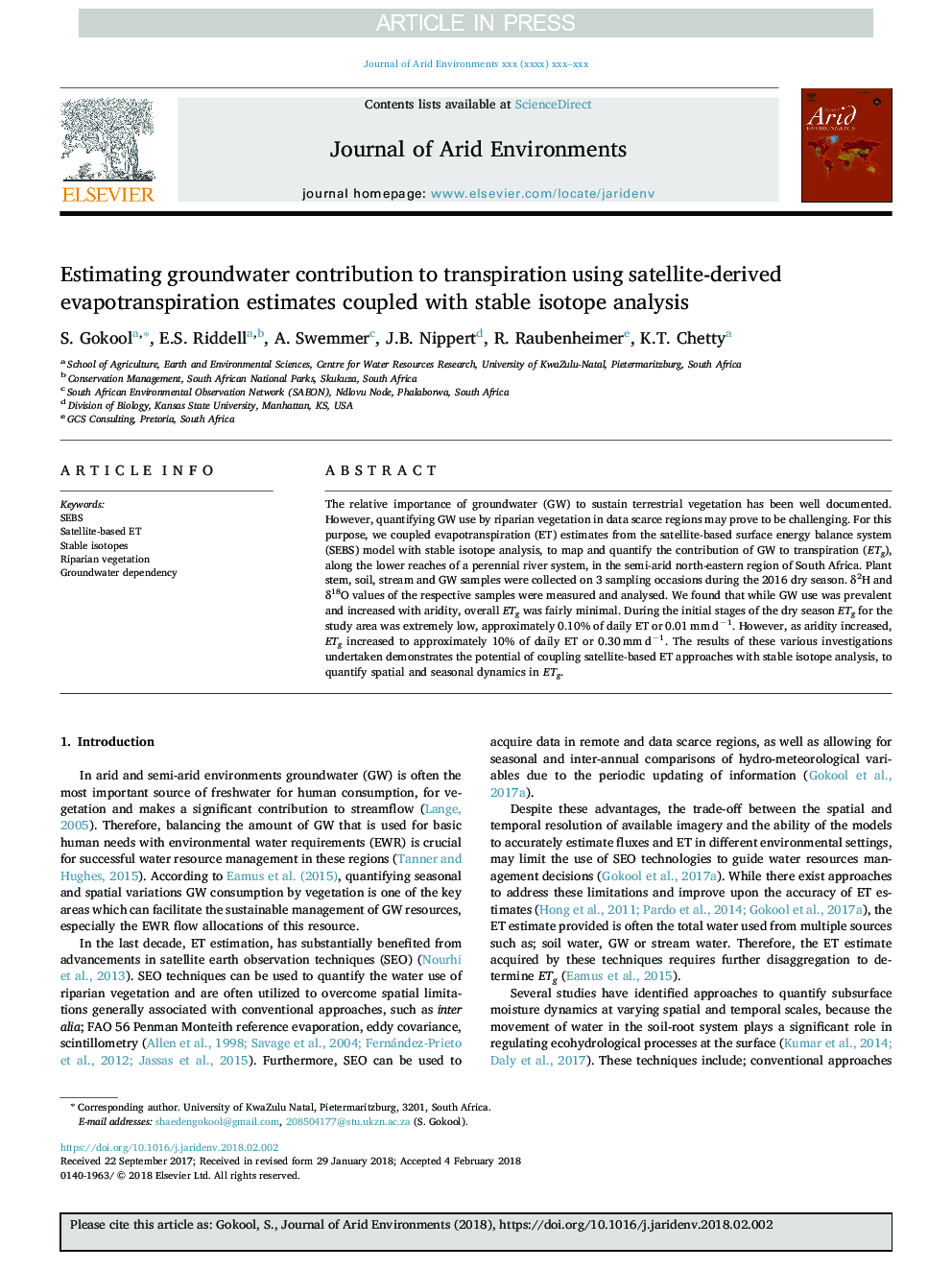| Article ID | Journal | Published Year | Pages | File Type |
|---|---|---|---|---|
| 8848525 | Journal of Arid Environments | 2018 | 10 Pages |
Abstract
The relative importance of groundwater (GW) to sustain terrestrial vegetation has been well documented. However, quantifying GW use by riparian vegetation in data scarce regions may prove to be challenging. For this purpose, we coupled evapotranspiration (ET) estimates from the satellite-based surface energy balance system (SEBS) model with stable isotope analysis, to map and quantify the contribution of GW to transpiration (ETg), along the lower reaches of a perennial river system, in the semi-arid north-eastern region of South Africa. Plant stem, soil, stream and GW samples were collected on 3 sampling occasions during the 2016 dry season. δ2H and δ18O values of the respective samples were measured and analysed. We found that while GW use was prevalent and increased with aridity, overall ETg was fairly minimal. During the initial stages of the dry season ETg for the study area was extremely low, approximately 0.10% of daily ET or 0.01â¯mmâ¯dâ1. However, as aridity increased, ETg increased to approximately 10% of daily ET or 0.30â¯mmâ¯dâ1. The results of these various investigations undertaken demonstrates the potential of coupling satellite-based ET approaches with stable isotope analysis, to quantify spatial and seasonal dynamics in ETg.
Related Topics
Physical Sciences and Engineering
Earth and Planetary Sciences
Earth-Surface Processes
Authors
S. Gokool, E.S. Riddell, A. Swemmer, J.B. Nippert, R. Raubenheimer, K.T. Chetty,
